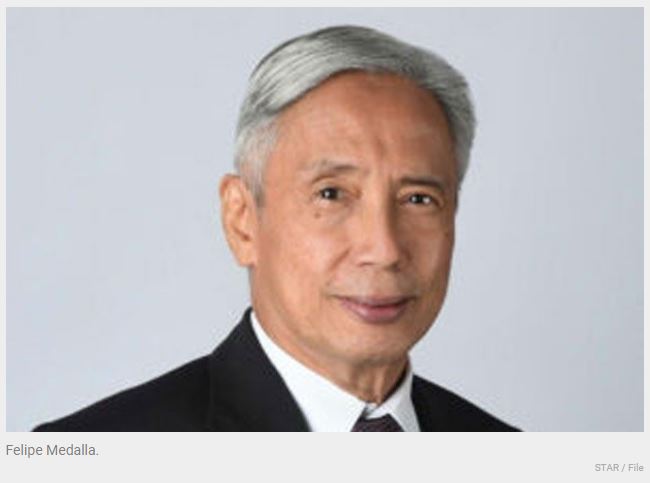Philippines exerts more effort to exit gray list
MANILA, Philippines — AMLC chairman and Bangko Sentral ng Pilipinas Governor Felipe Medalla told reporters on the sidelines of the 2nd Bankers Association of the Philippines (BAP) CEO Forum that the country is exerting additional effort to exit FATF’s list of nations considered at high risk of money laundering and terror financing.
“We will exert extra effort because this time it is no longer us passing laws. They (FATF) are looking for more conviction, more prosecution, more people getting caught. And that’s very hard, to ramp it up in a very short period,” Medalla said.
After a two-day plenary that ended Oct. 21, the Paris-based FATF decided to retain the Philippines in the list of jurisdictions under increased monitoring or gray list as it failed to address strategic deficiencies in its regimes to counter money laundering, terror and proliferation financing.
The Philippines, which was re-included in the gray list in June last year, has until January next year to deliver and meet its commitment to the FATF and Asia Pacific Group on Money Laundering (APG) to strengthen the effectiveness of the country’s anti-money laundering/combating of financing of terrorism (AML/CFT) regime.
The global dirty money watchdog said the Philippines still needs to work on implementing its action plan to address its strategic deficiencies by demonstrating that effective risk-based supervision of designated non-financial businesses and professional (DNFBPs) is occurring and that supervisors are using AML/CFT controls to mitigate risks associated with casino junkets.
The FATF said the Philippines should also enhance and streamline law enforcement agencies’ access to beneficial ownership information and take steps to ensure that the information is accurate and up-to-date.
The Philippines, the watchdog said, should also demonstrate an increase in the use of financial intelligence and in money laundering investigations and prosecutions in line with risk.
The Philippines should also demonstrate an increase in the identification, investigation and prosecution of terrorism financing cases, as well as enhance the effectiveness of the targeted financial sanctions framework for both terrorism financing and proliferation financing by demonstrating that DNFBPs understand their obligations.
After it was included in the gray list anew more than a year ago, the Philippines has worked vigorously to address the deficiencies to meet the January 2023 deadline set by the FATF.
“We will take actions to increase the chances that we can exit,” Medalla said, even as he stressed that “it is not completely dependent on us. We’ve always said all along that it is not a whole-of-government approach but it is a whole-of-country approach.”
The Philippines was included in the black list of the FATF in June 2000, but was removed from the list in February 2005 after the passage of Republic Act 9180 or the Anti-Money Laundering Act (AMLA) of 2001 followed by the establishment of the Anti-Money Laundering Council through RA 9194 in 2003.
Since then, the Philippines has been in and out of the gray list. It was re-included in the list of jurisdictions under increased monitoring in June 2021 despite the enactment of RA 11479 or the Anti-Terrorism Act of 2020 as well as RA 11521 that amended the AMLA.
Source: https://www.philstar.com/business/2022/10/27/2219494/philippines-exerts-more-effort-exit-gray-list


 English
English




